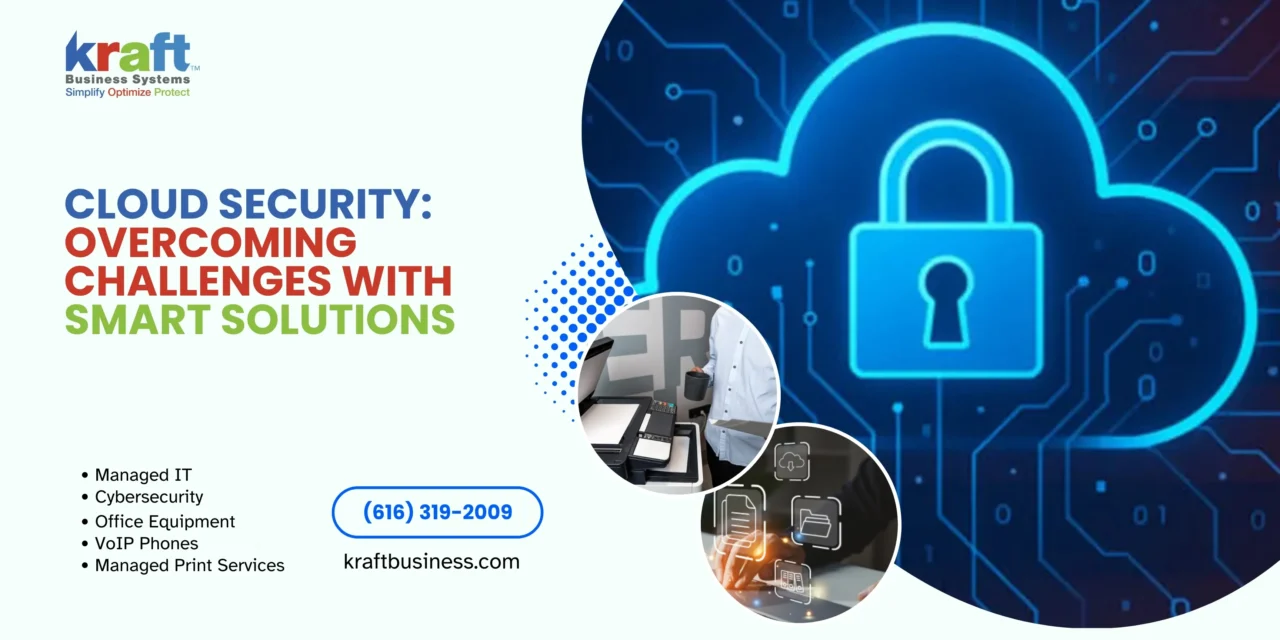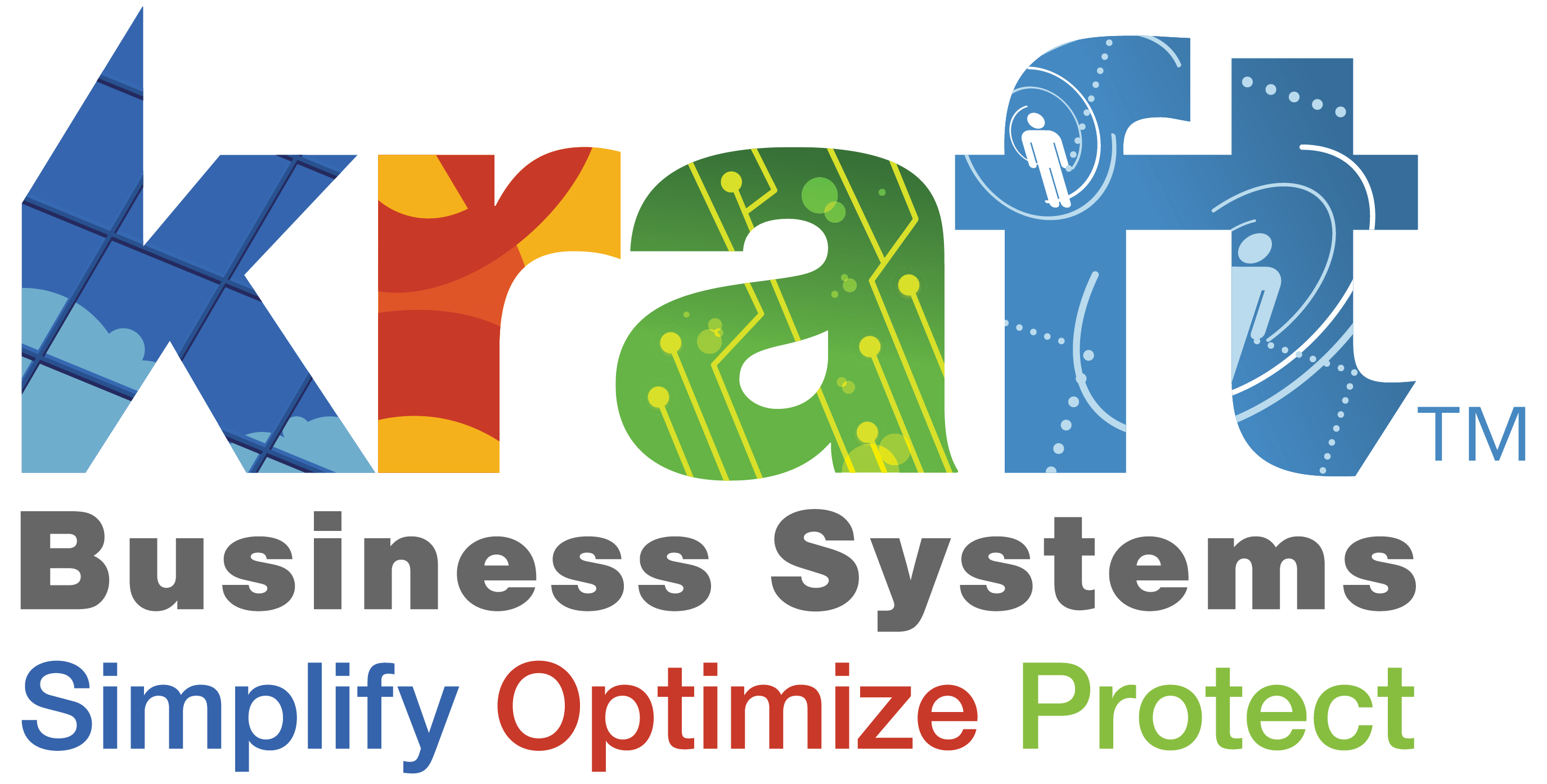Cloud security challenges and solutions are critical topics for any mid-sized business owner moving operations online. The cloud offers powerful tools to boost productivity and collaboration—but brings its own set of security headaches.
Here’s a quick overview of common challenges and smart solutions:
| Challenges | Solutions |
|---|---|
| Misconfigured Cloud Services | Automated Configuration Checks |
| Data Breaches | Strong Encryption & Access Controls |
| Insecure Interfaces (APIs) | Regular API Security Testing |
| Identity Management Issues | Multi-Factor Authentication |
We’ll dive deeper into these challenges and solutions, unpacking practical strategies to protect your business, simplify cloud management, and strengthen your cybersecurity.
Cloud security challenges and solutions terms you need:
Cloud security encompasses the technologies, policies, controls, and services that protect cloud data, applications, and infrastructure from threats. As businesses across Michigan from Grand Rapids to Detroit increasingly migrate to cloud environments, understanding the fundamentals of cloud security becomes essential.
At its core, cloud security focuses on three critical areas:
Data Protection: Cloud environments store vast amounts of sensitive information. Protecting this data requires encryption, access controls, and data loss prevention strategies.
Unauthorized Access Prevention: Cloud resources can be accessed from anywhere, making them vulnerable to unauthorized entry. Strong authentication mechanisms and network security measures are crucial.
Compliance Management: Businesses must adhere to various regulations regarding data storage and handling. Cloud environments must be configured to meet these compliance requirements.
At Kraft Business Systems, we’ve seen how proper cloud security implementation can transform a vulnerable system into a fortress. One of our clients in Traverse City reduced security incidents by 78% after implementing our recommended cloud security framework.
Cloud Security Challenges and Solutions
Keeping your business safe in the cloud can sometimes feel like herding cats—there’s a lot going on, and things can quickly slip through the cracks! Let’s break down some common cloud security challenges and solutions to help you stay ahead of potential threats and keep your Michigan business secure, whether you’re in Grand Rapids, Ann Arbor, or anywhere in between.
Misconfigurations
Misconfigurations are one of the sneakiest—and most common—issues businesses face in cloud security. In fact, research shows that nearly 65% of cloud security incidents happen because of incorrect setups. It’s like leaving your back door open uped and inviting trouble right in.
Fortunately, there’s a simple solution: automated configuration management tools. These handy tools constantly check your cloud configurations, quickly identifying and fixing any mistakes. Cloud Security Posture Management (CSPM) solutions, for example, automatically spot and correct issues before hackers can exploit them. (Curious about CSPM? Check out our full guide on cloud security posture management.)
Data Breaches
Data breaches are a business owner’s nightmare. They can cause not only big financial losses but also serious damage to your company’s reputation. And unfortunately, the average cost of a data breach just keeps rising year after year.
To tackle this, focus on comprehensive encryption—protecting your data while it’s sitting still (“data at rest”) and while it’s moving (“data in transit”). Think of encryption as locking your valuables safely away, so only those with the right keys can get to them.
But don’t stop there. You should also set strict access controls based on the idea of giving people only what they absolutely need—nothing more, nothing less. Regular security assessments and penetration testing can also help you catch vulnerabilities early, before the bad guys do.
Insecure APIs
Application Programming Interfaces (APIs) are the glue that hold cloud services together. They allow different systems to communicate smoothly—usually. But when APIs aren’t properly secured, they become easy entry points for cyber attackers, letting them sneak past your defenses.
The solution is straightforward: Use API gateways with strong authentication methods, and set up rate limiting to prevent abuse. Regular security testing is also important. Don’t forget good documentation and version management of your APIs, as these practices help you maintain a secure, reliable interface as your cloud environment grows and evolves.
Identity Management
Managing user identities across multiple cloud services can feel like herding a particularly unruly group of cats. With teams spread across different locations—from Grand Rapids to Traverse City and Kalkaska—keeping track of who’s who (and who has access to what) gets complicated fast.
To simplify identity management, establish a centralized identity and access management (IAM) system. Add in multi-factor authentication (MFA)—a must-have security measure that’s like adding extra locks on your front door. Implement role-based access control (RBAC) to make sure people only see or touch resources that match their job roles. Finally, consider single sign-on (SSO) solutions to make life easier for your employees without compromising on security.
By proactively addressing these common cloud security challenges and solutions, you’ll protect your business better, simplify your cloud operations, and sleep easier at night.
Top Cloud Security Risks
When it comes to securing your cloud environment, knowing the biggest risks makes a huge difference. At Kraft Business Systems, we help clients throughout Michigan—from Grand Rapids to Traverse City—focus their cybersecurity efforts on the areas that matter most. Let’s explore the primary risks you need to keep on your radar, along with practical tips for managing them effectively.
Expanded Attack Surface
Moving to the cloud offers amazing benefits, but it also broadens what we call your attack surface—the total number of access points attackers could exploit. With multiple cloud services, providers, and virtual environments, it’s easy to lose sight of all your assets. Unfortunately, something you can’t see is something you can’t protect.
To mitigate this risk, we recommend using comprehensive visibility tools. These solutions help map out every part of your cloud infrastructure, so you’re never left guessing. Regular security assessments are also crucial. By proactively identifying weak spots, you can fix them before a hacker even notices.
Human Error
Let’s face it—no one is perfect. Even your most diligent team members can occasionally make mistakes. Unfortunately, these mistakes, such as accidental data exposure, weak passwords, or clicking a tempting phishing link, can lead directly to breaches. In fact, human error remains one of the top causes of cloud security incidents.
Reducing human error starts with regular, engaging security awareness training. Make it relatable, practical, and yes—even fun! Automated security guardrails are another great tool. They help prevent common slip-ups like accidental exposures or misconfigurations. Don’t forget clear, easy-to-understand policies that guide your entire team toward safer behavior.
Misconfiguration
Cloud services are wonderfully flexible, but that flexibility can lead to complexity. With so many settings, options, and integrations, it’s easy to accidentally leave something misconfigured. Misconfigurations aren’t just small tech hiccups—they’re one of the leading causes of serious cloud security incidents.
The best way to tackle misconfiguration risk is through Infrastructure as Code (IaC), where you pre-define your cloud infrastructure in software. This method builds security checks directly into your deployment process, dramatically cutting down configuration issues. Pair that with regular audits and automated compliance checks, and you’ll sleep much easier at night.
Data Breaches
No organization ever wants to face a data breach. It’s the cybersecurity nightmare that brings not only financial damage but also hurts your hard-earned reputation. Sadly, data breaches can happen anytime your cloud security isn’t airtight.
To protect your business, we recommend a defense-in-depth approach. This means using multiple layers of protection—encryption, tight access controls, network segmentation, endpoint security, and constant monitoring. Think of it as placing several locked doors between your sensitive data and cyber criminals. Even if attackers get through one layer, more defenses await, keeping them frustrated and your data safe.
By understanding these top cloud security risks, you can take the right steps to safeguard your business. With careful planning, practical strategies, and a proactive mindset, cloud security doesn’t have to be overwhelming. At Kraft Business Systems, we’ve helped numerous businesses across Michigan confidently steer these cloud security challenges and solutions—and we’re here to help you too.
Effective Cloud Security Solutions
To steer modern cloud security challenges and solutions, businesses need tools specifically designed to keep their cloud environments safe. At Kraft Business Systems, we recommend several essential technologies to our clients throughout Michigan.
One vital tool is CASB (Cloud Access Security Broker). Think of CASBs as gatekeepers standing between your users and cloud services. They monitor activity, enforce security policies, and provide critical visibility into “shadow IT”—those sneaky apps employees sometimes use without IT knowing (we’ve all been there!). Deploying CASBs helps enforce your data protection rules and ensures compliance standards are consistently met across all your cloud services.
Next up is CWPP (Cloud Workload Protection Platform). Workloads—whether they’re virtual machines, containers, or serverless apps—need dedicated protection as they run in various cloud environments. CWPP solutions offer robust safeguards, including vulnerability scanning, compliance checks, and real-time threat protection. Implementing CWPP helps ensure your valuable workloads stay secure wherever they’re running, whether that’s in public clouds, private clouds, or hybrid setups.
Another powerful ally is CSPM (Cloud Security Posture Management). Misconfigurations remain a common source of breaches (remember, nearly 65% of cloud security incidents trace back to misconfiguration!). CSPM tools continuously scan your cloud infrastructure, spotting misconfigurations and compliance issues before they cause trouble. We often recommend clients implement cloud security posture management solutions to proactively catch and fix configuration mistakes—saving headaches and preventing breaches.
Identity management complexities become simpler with CIEM (Cloud Infrastructure Entitlement Management) solutions. With so many users, roles, and permissions floating around, it’s easy for someone to have more access than necessary. CIEM solutions give you clear visibility and control over identities and permissions, helping you spot and remove excessive privileges—closing the door against potential exploitation.
Finally, businesses embracing cloud-native applications need comprehensive security built for modern development. That’s where CNAPP (Cloud-Native Application Protection Platform) steps in. CNAPPs merge multiple security functions—like vulnerability management, compliance enforcement, and runtime protection—into a single, integrated solution. They protect your applications from the earliest stages of development through production, ensuring security is baked right into your application lifecycle.
Leveraging these effective cloud security tools not only helps you reduce risk but also simplifies management, giving you more time to focus on what really matters—running and growing your business.
Best Practices for Cloud Security
Securing your cloud environment involves more than just choosing the right technology tools. To truly protect your business, you’ll want to build solid habits and processes. Here are several best practices we’ve found incredibly effective for our clients across Michigan—from Grand Rapids to Detroit and everywhere in between.
Cloud security is a partnership—you and your cloud provider each have important roles to play. Providers like AWS, Microsoft Azure, or Google Cloud are responsible for protecting the infrastructure itself (think hardware, data centers, and network). But as a customer, your responsibilities include safeguarding your own data, managing access, and securing your applications.
To make sure nothing slips through the cracks, clearly document security responsibilities for each cloud service your business uses. Then, make sure your team understands exactly what’s expected. Think of it as clearly defining chores at home—you’ll avoid misunderstandings and missed steps later on.
Conduct Regular Security Audits
Just like visiting your doctor for an annual check-up, periodic security audits catch problems early before they cause bigger issues. Regular assessments help your team spot vulnerabilities, compliance gaps, or misconfigurations before they’re exploited—saving you headaches, downtime, and potentially large financial losses.
At Kraft Business Systems, we recommend setting a regular audit schedule that combines automated scans and manual checks. Automated scans quickly identify the obvious vulnerabilities, while manual reviews dig deeper into subtle issues automated tools might miss. Always document your findings, assign clear deadlines, and regularly follow up to ensure everything is resolved.
Secure All Endpoints
With remote work becoming standard from Flint to Sterling Heights, endpoint security matters more than ever. Every laptop, tablet, and smartphone connected to your cloud resources represents a potential entry point for attackers.
To stay safe, implement comprehensive endpoint protection platforms that detect and respond to threats instantly. Make sure all company-managed devices consistently run updated security software. Enforce clear security policies for everyone, no matter where they work from. Whether it’s the coffee shop in Ann Arbor or a home office in Kalkaska, each endpoint must meet your security standards.
Implement Comprehensive Backup and Recovery
Even with top-notch preventive measures, incidents can still happen. Having a robust backup and recovery plan in place is like keeping a spare tire handy—you may never use it, but you’ll be thankful it’s there when you need it.
Make sure your backups are encrypted and stored securely, separate from your main cloud environment. Regularly test your restoration process—because a backup is only useful if it actually works when you need it. Document detailed recovery procedures and train your team so everyone knows exactly how to respond quickly during an emergency.
At Kraft Business Systems, we’ve seen how these practices make a difference. One of our Grand Rapids clients recently faced a ransomware incident. Because they had reliable backups and clear recovery procedures, they restored their data and returned to normal in no time—avoiding serious disruption and financial loss.
By following these best practices, you’ll build a strong foundation to tackle common cloud security challenges and solutions head-on, so you can stay focused on growing your business.
Frequently Asked Questions about Cloud Security
What is a hybrid cloud environment?
A hybrid cloud is a combination of private cloud infrastructure (which can be located on-premises or hosted externally) and public cloud services. Think of it as getting the best of both worlds—keeping your sensitive or regulated data safely tucked away in your own private cloud, while tapping into the flexibility and scalability of public clouds for less sensitive tasks or busy periods.
At Kraft Business Systems, we’re experienced in helping Michigan businesses create hybrid cloud solutions that balance strong security, compliance, and everyday operational efficiency. For instance, if you’re a healthcare provider in Lansing, you’d likely prefer to keep patient records secured in a private cloud, but your website and marketing efforts could easily run in a public cloud environment to save costs and improve flexibility.
How can organizations improve visibility in a hybrid cloud environment?
Gaining clear visibility across a hybrid cloud can be tricky—you’re dealing with different systems, locations, and service providers. But there are practical strategies you can use to simplify things:
First, implement unified monitoring tools designed to give you a clear, single-window view of all your cloud and on-premises assets. Next, deploy cloud security monitoring solutions that can collect and analyze log data across your entire environment, helping you spot issues early.
To keep things organized (and to avoid endless confusion!), establish consistent tagging and naming conventions. This makes asset tracking and management straightforward. Also, regularly perform cloud inventory assessments to detect any shadow IT—those rogue cloud services your team may be using without your knowledge.
Not long ago, we helped a manufacturing company in Grand Rapids deploy a unified monitoring solution. The result? Their incident response time dropped by an impressive 67%, thanks to improved visibility and faster reaction times across their hybrid cloud setup.
Why is compliance more challenging in hybrid cloud environments?
Hybrid clouds definitely add complexity when it comes to compliance—and for good reason:
With multiple cloud environments, your business might face different compliance requirements depending on exactly where your data lives. For instance, sensitive financial or healthcare data in your private cloud might have stricter guidelines than your public cloud data.
Additionally, data movement between environments can complicate things. Any data being transferred or accessed across different clouds must consistently meet compliance standards. And don’t forget, you need clear and thorough documentation and audit trails that span across multiple systems—this is essential for showing compliance to regulators.
Adding another wrinkle, the responsibility boundaries between your business and cloud providers aren’t always obvious. It’s important to clearly define who is responsible for what when it comes to compliance tasks.
But don’t worry—we’ve got your back. At Kraft Business Systems, we recommend implementing automated compliance scanning tools, clearly documenting compliance standards for each type of data, and establishing strong governance policies. This approach helps you easily maintain compliance across your entire hybrid cloud environment.
Conclusion
Cloud adoption continues to grow rapidly across businesses in Michigan, making effective cloud security challenges and solutions more important than ever. At Kraft Business Systems, we see cloud security not as a barrier to innovation—but as a key part of making innovation possible.
We help businesses all over Michigan—from busy offices in Detroit to cozy startups in Traverse City—take a practical, strategic approach to cloud security. By carefully choosing the right technologies and combining them with proven best practices, we help our clients build secure cloud environments that support growth, agility, and peace of mind.
Cloud security isn’t something you set and forget (as nice as that would be!). It’s an ongoing process of regular security checks, continuous monitoring, and keeping your eyes open for new threats on the horizon.
At Kraft Business Systems, we stand by a few key principles:
- Regular assessments to catch vulnerabilities before they become problems.
- Continuous monitoring to maintain visibility and respond quickly to threats.
- Staying informed and proactive about new challenges and emerging solutions.
Protecting your cloud environment is about keeping your data—and your business—safe and sound. Our friendly team of experts has decades of combined experience securing cloud solutions for businesses big and small. We’re here, ready to guide you every step of the way. Whether you’re just starting your cloud security journey or looking to level up your existing posture, we’ve got your back.
If you have questions or need help tackling your cloud security challenges and solutions, don’t hesitate to get in touch with us. Together, let’s make sure your business stays secure, efficient, and ready for whatever the future holds.













